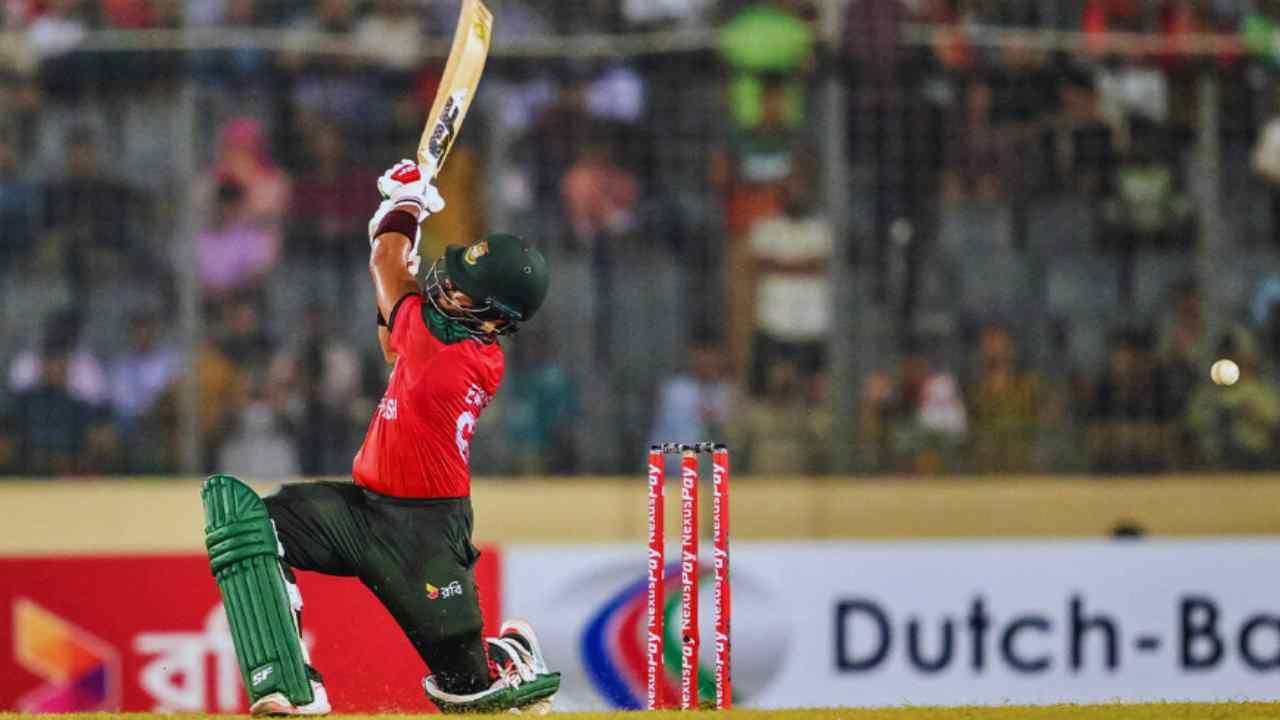Bangladesh have endured a challenging transition over the last two years, but one bright spot has been their remarkable improvement in power-hitting in T20 internationals.
From 2006 to 2023, Bangladesh averaged just 3.81 sixes per T20I innings — the lowest among ICC Full Members. That figure rose to 5.08 in 2024 and jumped again to 7.73 in 2025. In total, they smashed 238 sixes in 2024–25 compared with only 130 across 2022–23. This sudden surge in six-hitting marks a sharp break from their historically conservative approach and has offered a spark during what had been a tough year.
They now hope this fearless batting mindset will carry them into a strong showing at the 2025 Asia Cup. Bangladesh last reached the final in 2018 and are still chasing their maiden trophy.
The Young Hitters Leading the Charge
The transformation has been driven by a new group of aggressive batters — openers Tanzid Hasan (24) and Parvez Hossain (23), along with middle-order hitters Jaker Ali (27) and Shamim Hossain (24). Unlike earlier generations, they aren’t limited to one or two big shots; instead, they boast wider range and confidence to take risks.
Between 2021 and 2023, Bangladesh cleared the boundary once every 9.5 balls. By 2024–25, that rate had improved dramatically to once every 5.58 balls.
Senior assistant coach Mohammad Salahuddin credits this quartet for changing the culture within the team. “We know how Tamim (Tanzid), Emon (Parvez), Hridoy and Jaker want to play. Their attacking intent and growing technical skill have had a ripple effect across the side,” he said.
Why Six-Hitting Matters
Bangladesh’s past strategy of preserving wickets for a late surge rarely worked. They still lack an Asia Cup title and have never made a T20 World Cup semi-final. From 2005–23, they had the lowest sixes-per-innings ratio (3.81) and the worst balls-per-six ratio (29.58) among 12 Full Members.
But in the past two years, they’ve averaged 6.10 sixes per innings and a balls-per-six rate of 18.56, better than Afghanistan, Sri Lanka, Ireland, and Zimbabwe. Their overall run rate has also improved, from 7.20 (2021–23) to 7.81 (2024–25).
A New Mentality
This quartet is already being hailed as Bangladesh’s first true generation of six-hitters. Together, they average a six every 15.38 balls — far better than the senior stalwarts Shakib Al Hasan, Tamim Iqbal, Mushfiqur Rahim and Mahmudullah, who managed one every 32.89 balls.
Salahuddin believes their rise is due to natural ability and purposeful training. “They know their roles, they’ve grown comfortable, and domestic cricket now gives them better pitches to express themselves,” he said.
Former captain Shahriar Nafees, now a BCB official and BPL batting coach, sees a cultural shift. “This generation grew up watching Chris Gayle and AB de Villiers. Our generation was taught to keep the ball on the ground, but these boys were raised to hit sixes. It’s a different mindset.”
Technical Growth
Nafees personally worked with Tanzid on range-hitting, leading to breakthrough innings in the BPL. Similarly, Jaker has improved his base and balance under Salahuddin, making him more efficient in short T20I stints. Shamim has expanded his shot selection, becoming a valuable finisher.
Nafees also stressed that six-hitting isn’t just about raw strength: “It’s more about timing than trying to smash the ball in half.”
Statistically, Bangladesh have become more dangerous in the powerplay and beyond. In 2024–25, they strike at 123.62 in powerplays (up from 103.83 in 2021–23), with more sixes both down the ground and square. Their conversion rate has improved too — for example, they now hit a six every 4.59 pull shots, compared to once every 18 previously.
As Tanzid and Parvez set the tone early, the middle and lower order have followed, lifting Bangladesh’s middle-over strike rate to 7.5 (from 6.98) and death-over strike rate to 9.73 (from 8.30).
The Asia Cup Challenge
The big question is whether Bangladesh can maintain this aggressive brand of batting on the big stage. In the Asia Cup, they’ll face Hong Kong, Sri Lanka, and Afghanistan in the group stage. Having beaten Sri Lanka in a T20I series earlier this year, their immediate target is to reach the Super Four.
If they stay committed to their six-hitting revolution, this might be Bangladesh’s best chance yet to finally break their trophy drought.








.svg)

_5.jpg)
